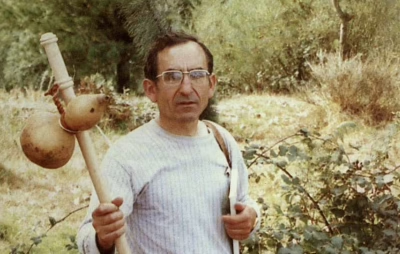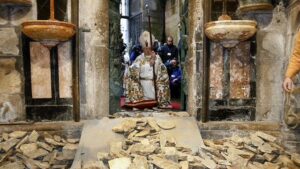The history of the Camino de Santiago is filled with figures who have left an indelible mark on its development and promotion. One of these figures is Elías Valiña, whose life and work are now the subject of a new publication. The book, titled Elías Valiña, il paladino del Cammino (1959-1989), offers an in-depth look at his legacy and is the result of a collaborative effort among various academic and cultural institutions.
This article presents the recent publication and its relevance, as well as details about its presentation in two emblematic Galician locations. Join us to discover more about Valiña’s life and his impact on the Camino de Santiago.
The legacy of Elías Valiña on the Camino de Santiago
Elías Valiña was a priest and a fervent advocate of the Camino de Santiago, known for his essential role in revitalizing this historic route. Throughout his life, Valiña worked tirelessly to promote pilgrimage to Santiago de Compostela, especially among those seeking to renew their spirituality and connection with tradition.
His work was not limited to promoting the Camino; he also focused on creating infrastructure and improving services for pilgrims. Among his most notable achievements were:
- The marking and signposting of the Camino, essential for guiding pilgrims along their journey.
- The restoration of hostels and the promotion of hospitality in various towns along the route.
- His involvement in the creation of associations of friends of the Camino, fostering cooperation and mutual support among pilgrims.
Details about the publication of the book
The work Elías Valiña, il paladino del Cammino (1959-1989) is an Italian translation of the original book Elías Valiña, valedor do Camiño (1959-1989), written by Luís Celeiro. This translation was carried out as part of an educational project at the University of Cagliari in Sardinia, directed by Professor Daniela Zizi, who worked to make this important figure of Galician culture accessible to an Italian audience.
The project reflects the growing interest in the Camino de Santiago not only in Spain but also abroad, where many people seek to understand the spiritual and cultural significance of this ancient route.
The impact of the Camino de Santiago on European culture
The Camino de Santiago has long been an important cultural and spiritual meeting point. It is not only a pilgrimage route but also a living expression of Europe’s cultural diversity. As pilgrims travel along the route, they encounter local traditions, varied cuisine, and architectural styles that reflect the history of each region.
The benefits of the Camino go beyond the spiritual sphere. Some of the most significant impacts include:
- Promotion of tourism: The Camino attracts millions of visitors every year, benefiting local economies.
- Preservation of heritage: The route has led to the restoration and conservation of churches, monasteries, and historical paths.
- Promotion of sustainability: The increasing number of pilgrims has inspired initiatives to protect the environment and encourage responsible tourism.
The importance of translation and cultural exchange
The translation of Elías Valiña’s book into Italian is not merely a linguistic exercise; it is a cultural bridge that connects different peoples and traditions. Through this publication, Italian readers have the opportunity to explore the life of a man whose work has been crucial to preserving a shared heritage. This cultural exchange is vital for several reasons:
- Encouraging understanding: Translation allows local stories to reach international audiences, promoting greater cultural awareness.
- Increasing interest in the Camino: By highlighting significant figures such as Valiña, curiosity about the Camino de Santiago grows.
- Strengthening connections: Literature can unite communities through shared interests in history, spirituality, and culture.
Final reflections on Elías Valiña and his legacy
The work of Elías Valiña continues to resonate today, not only through his concrete actions during his lifetime but also through the lasting impact he has had on the Camino de Santiago. His figure stands as a symbol of dedication and love for a cultural heritage that continues to attract thousands of people from all over the world.
The presentations of the book offer a perfect opportunity to remember his contribution and reflect on how each pilgrim walking the Camino carries with them not only their own story but also the legacy of those who, like Valiña, have made the Camino a place of encounter and spirituality.



